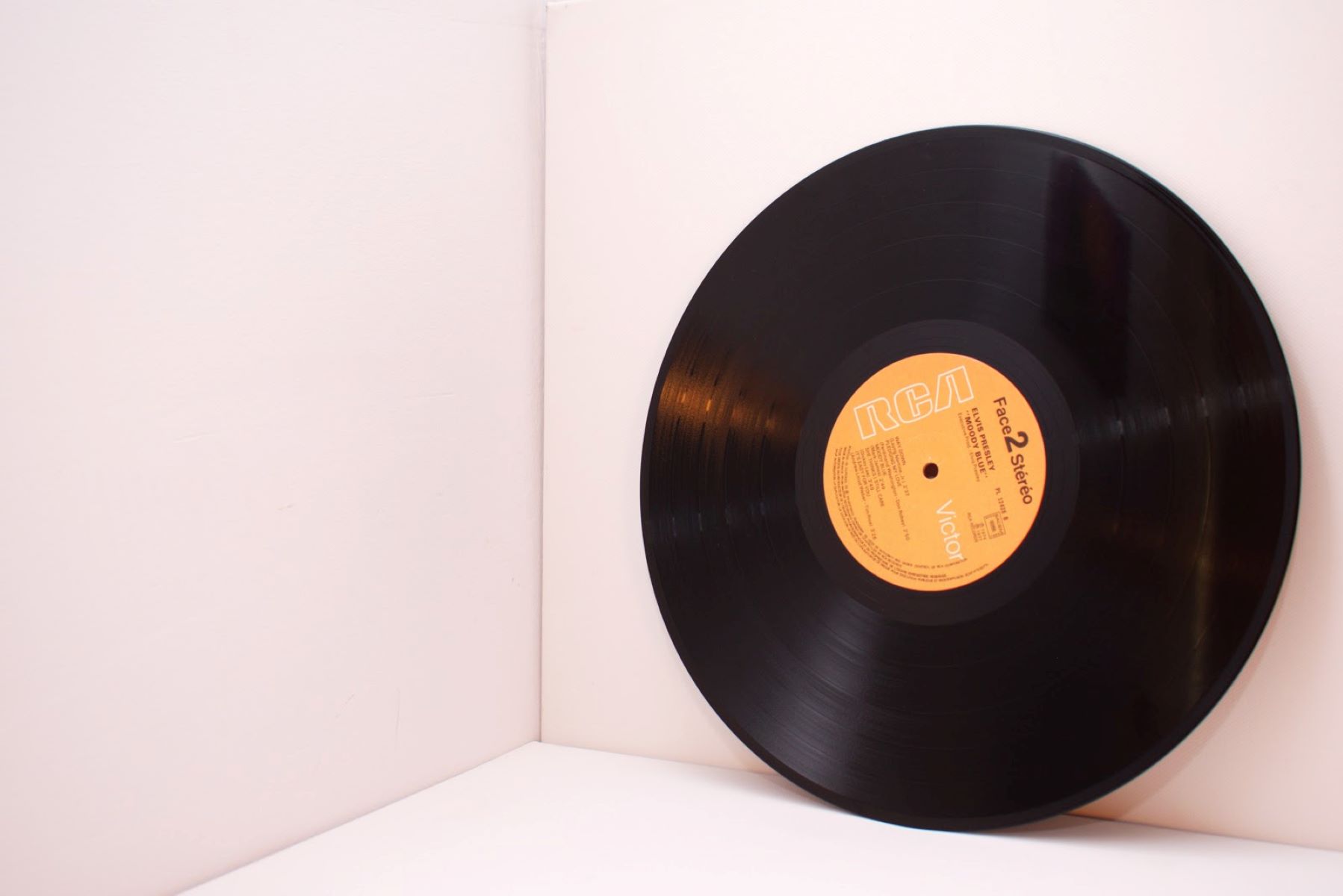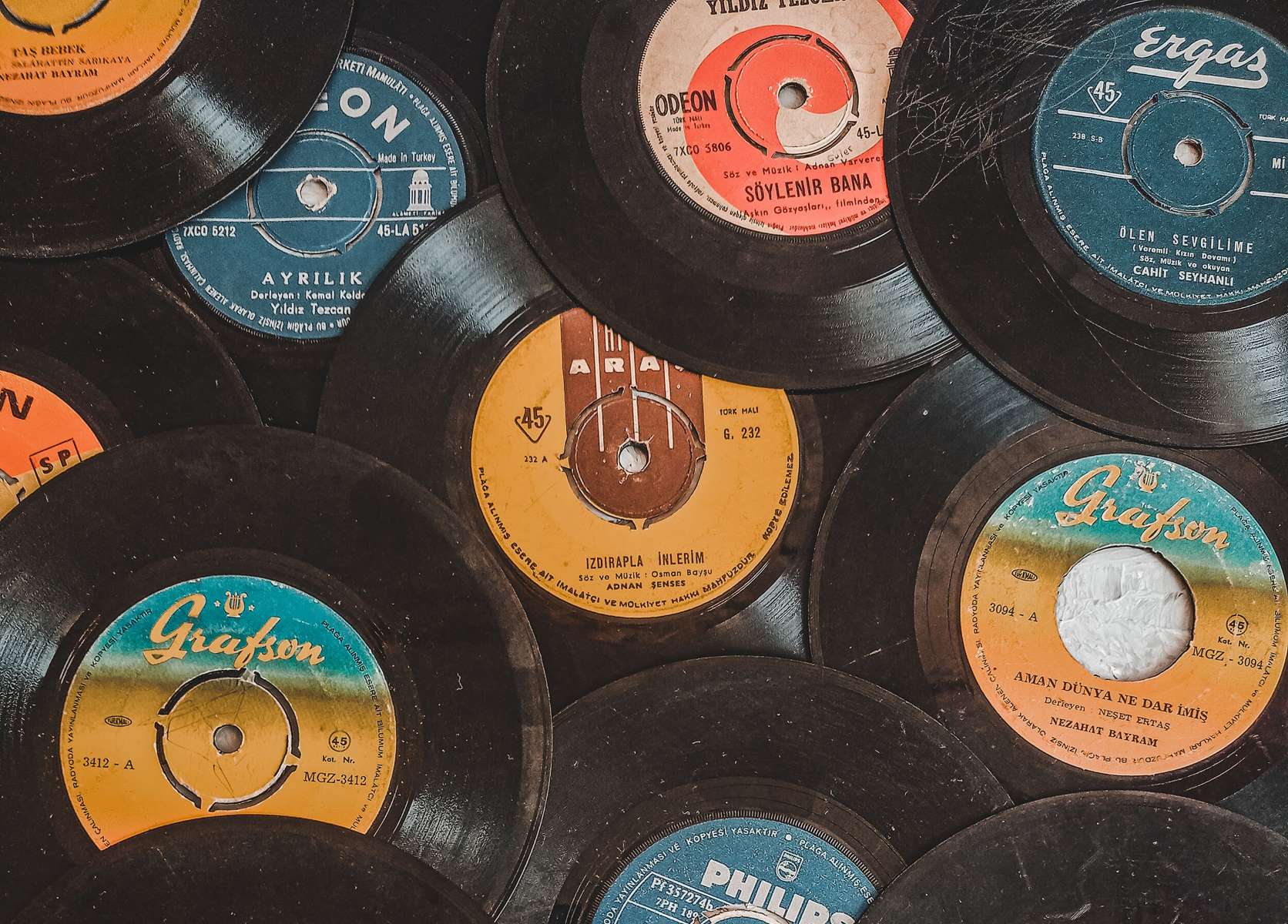Home>Production & Technology>Record Label>How Does A Record Label Make Money


Record Label
How Does A Record Label Make Money
Published: January 24, 2024
Discover the lucrative ways a record label generates income and maximizes profits. From music sales to streaming royalties, find out how record labels make money.
(Many of the links in this article redirect to a specific reviewed product. Your purchase of these products through affiliate links helps to generate commission for AudioLover.com, at no extra cost. Learn more)
Table of Contents
Introduction
A record label is a crucial component of the music industry, responsible for discovering, signing, promoting, and distributing talented artists and their music. While many people enjoy the music produced by record labels, they may not fully understand how these entities make money. In this article, we’ll delve into the various revenue streams that contribute to a record label’s financial success.
Record labels primarily generate income through a combination of royalties, sales and distribution, licensing and sync fees, merchandise and physical sales, touring and concert revenue, brand partnerships and sponsorships, publishing and songwriting revenue, and streaming and digital sales. Each revenue stream plays a vital role in supporting the label’s operations and ensuring the continuity of the music they produce.
Understanding how record labels make money is not only interesting for music enthusiasts but also for aspiring artists who aim to sign with a label. By comprehending the revenue streams involved, artists can navigate the industry with greater knowledge and negotiate fair deals that benefit both parties involved.
Now that we have a general understanding of the purpose of record labels and the importance of their financial success, let’s dive into the various revenue streams in more detail.
Royalties
Royalties are a significant source of income for record labels. When an artist signs with a label, they typically enter into a contractual agreement outlining the percentage of royalties the label will receive from the sales or usage of their music. The two main types of royalties are mechanical royalties and performance royalties.
Mechanical royalties are earned from the sales or streaming of recorded music. Record labels collect a portion of the revenue generated from physical and digital sales of albums, singles, and downloads. They also receive a share from streaming platforms based on the number of streams an artist’s music receives. The exact percentage varies depending on the artist’s contract and the label’s negotiation power.
Performance royalties, on the other hand, are earned when an artist’s music is performed or broadcast publicly. This includes radio airplay, television appearances, live performances, and even in-store background music. Performance rights organizations like ASCAP, BMI, and SESAC collect these royalties on behalf of the artists and distribute them to the respective labels.
It’s worth noting that artists also receive a portion of the royalties, usually negotiated in their contract with the label. The label’s share, however, is vital for covering expenses such as marketing, distribution, and promotion.
Royalties are essential to a record label’s financial success as they provide a consistent source of income. Labels invest in artists and their music, and royalties allow them to recoup their expenses and potentially profit from their investments.
Sales and Distribution
Sales and distribution are key components of a record label’s revenue streams. The label plays a crucial role in manufacturing physical copies of the music, such as CDs, vinyl records, and merchandise, and distributing them to various retailers.
Record labels work closely with distributors to ensure their music reaches a wide audience. Distributors have established relationships with music stores, both physical and online, and help make the music available to consumers. The label receives a percentage of the revenue from each physical copy sold, with the distributor taking their share as well.
In addition to physical sales, record labels also benefit from digital distribution. This includes making the music available for purchase or streaming on platforms such as iTunes, Spotify, and Amazon Music. Labels earn a percentage of the revenue generated from digital sales or streaming, depending on the terms of the agreement with the distributor or the platform itself.
Furthermore, some record labels have their own online stores where fans can directly purchase music and merchandise. By cutting out the middleman, labels can retain a larger portion of the revenue generated from these sales.
Record labels invest in marketing and promotion efforts to create awareness and drive sales for the music they represent. They may allocate funds for advertising campaigns, music videos, social media promotions, and other marketing strategies. The success of a label’s marketing efforts can significantly impact sales and therefore contribute to their overall revenue.
Sales and distribution are critical to a record label’s financial success. By effectively distributing their music and merchandise, labels not only generate revenue but also create opportunities for artists to grow their fan base and increase their exposure.
Licensing and Sync Fees
Licensing and sync fees are another significant source of income for record labels. These fees are earned when a label grants permission for their music to be used in various media and commercial applications.
Licensing refers to the process of granting rights to use music in films, TV shows, advertisements, video games, and other media projects. When a label licenses a song, they receive a fee upfront or on a per-usage basis. The amount of the fee varies depending on factors like the popularity of the song, the medium in which it will be used, and the negotiating power of the label.
Sync fees, on the other hand, are earned when a label’s music is synchronized with visual content, such as in a movie scene, TV show, or commercial. These fees are negotiated separately from licensing fees and often result in higher compensation for the label due to the added value of the visual component.
Licensing and sync fees can be a lucrative revenue stream for record labels, particularly if their music is used in high-profile projects or widely viewed advertisements. These fees not only provide a financial boost but also help increase the exposure and recognition of the label and its artists.
Labels typically have dedicated licensing departments or work with licensing agencies to connect with various media outlets and negotiate licensing deals. They also ensure that the necessary legal clearances and permissions are obtained to avoid any copyright infringement or legal issues.
In recent years, the rise of online streaming platforms and user-generated content has expanded the opportunities for licensing and sync deals. Labels can now license their music to be used in YouTube videos, podcasts, and other digital media, further diversifying their revenue streams.
Overall, licensing and sync fees are an important aspect of a record label’s financial success, providing additional revenue through the usage of their music in various forms of media and commercial projects.
Merchandise and Physical Sales
Merchandise and physical sales are profitable revenue streams for record labels. In addition to selling music in the form of albums and singles, labels often produce and sell merchandise related to their artists, including t-shirts, hats, posters, and other branded items.
Merchandise sales allow labels to capitalize on the popularity and fan following of their artists. Fans are often eager to show their support by purchasing merchandise featuring their favorite artist’s logo or artwork. Record labels work closely with artists to design and produce merchandise that aligns with their brand and appeals to their fan base.
Labels may sell merchandise through various channels, including their own online stores, physical retail stores, and at concerts and events. They earn a profit margin on each item sold, which contributes to their overall revenue.
Physical sales of albums and singles are another important revenue stream for record labels. While the digital music market has grown significantly in recent years, there is still demand for physical copies of music, especially among collectors and die-hard fans.
Labels manufacture physical copies of albums and singles, usually in the form of CDs or vinyl records, and distribute them to retailers. They earn a portion of the revenue from each physical copy sold, with the retailer also taking a cut.
In recent years, vinyl records have experienced a resurgence in popularity, creating a new market for labels to tap into. Many music enthusiasts appreciate the tactile experience and sound quality of vinyl and are willing to invest in their favorite albums in this format. Record labels take advantage of this trend by producing limited edition vinyl releases and reissuing popular albums.
Merchandise and physical sales contribute to a record label’s financial success by diversifying their revenue streams and leveraging the popularity and loyalty of their artists’ fan base. It allows labels to engage with fans on a more tangible level and generate additional income beyond music streaming and digital sales.
Touring and Concert Revenue
Touring and concert revenue is a significant source of income for record labels. When artists go on tour, they perform live concerts in various venues, ranging from small clubs to large arenas. These concerts not only provide a platform for artists to connect with their fans but also generate substantial revenue for the labels.
Record labels play a crucial role in organizing and managing the logistics of tours, such as securing venues, booking travel arrangements, and coordinating promotional efforts. They often work closely with booking agencies and concert promoters to ensure the success of the tour.
Revenue from touring comes from ticket sales. Record labels receive a percentage of the ticket revenue, which is typically negotiated in the artist’s contract with the label. The label’s share helps cover the expenses associated with the tour, such as production costs, marketing, and travel expenses.
In addition to ticket sales, tour merchandise sales are another important aspect of generating revenue during concerts. Fans have the opportunity to purchase exclusive tour merchandise, such as t-shirts, posters, and other branded items. The label earns a profit from each merchandise sale, contributing to their overall revenue.
Successful tours can be highly profitable for record labels, especially if the artist has a dedicated fanbase and sells out shows. The revenue generated from touring not only supports the label’s operations but also helps fund future projects and investments.
It’s worth noting that touring revenue can vary significantly depending on the size and popularity of the artist. Established artists who can command higher ticket prices and sell out large venues can generate substantial income for both themselves and their affiliated record labels. On the other hand, emerging artists may rely on smaller-scale tours to build their fanbase and generate exposure.
Touring and concert revenue is a dynamic and thriving sector of the music industry. It allows record labels to financially support their artists, create memorable experiences for fans, and foster a deeper connection between artists and their audience.
Brand Partnerships and Sponsorships
Brand partnerships and sponsorships are an increasingly important revenue stream for record labels. These collaborations involve partnering with brands to promote their products or services while leveraging the influence and popularity of the label’s artists.
Record labels have a unique advantage when it comes to brand partnerships. They have a roster of talented artists with dedicated fan bases, making them attractive to brands that want to reach a specific target audience. Labels can negotiate deals with brands to feature their artists in advertising campaigns, sponsor tours or events, or create co-branded merchandise.
Brand partnerships can take various forms, including endorsements, product placements, and collaborations. Labels work closely with brands to create authentic and compelling campaigns that resonate with both the artist’s fan base and the brand’s target market.
These partnerships provide a significant source of income for record labels. Brands typically pay a fee to align themselves with the label’s artists and gain exposure to their fan base. The revenue generated from these collaborations can support the label’s operations, invest in artist development, and fund various marketing initiatives.
Furthermore, brand partnerships can provide additional promotional opportunities for artists. Labels can leverage the brand’s marketing channels, such as social media, advertising, and events, to increase the visibility and reach of their artists.
Record labels must carefully select brand partnerships that align with the values and image of their artists. Authenticity is crucial to maintaining the trust and loyalty of the fan base. When executed well, brand partnerships can not only provide financial benefits but also enhance the artist’s brand and open doors to new opportunities.
As the music industry becomes more competitive and artists face challenges in monetizing their music, brand partnerships offer a viable solution for generating revenue and expanding their reach. For record labels, these collaborations provide a valuable avenue to diversify their income streams and foster mutually beneficial relationships with brands.
Publishing and Songwriting Revenue
Publishing and songwriting revenue is a crucial aspect of a record label’s financial success. When an artist creates and releases music, the rights to the songs are divided into two main categories: the master rights, controlled by the record label, and the publishing rights, which encompass the songwriting and composition.
Publishing revenue comes from various sources, including mechanical royalties, performance royalties, synchronization licenses, and sheet music sales. These royalties are collected by performance rights organizations (PROs) like ASCAP, BMI, and SESAC, who then distribute the royalties to the publishers.
Record labels often have their own publishing divisions or work with external music publishers to administer the publishing rights of their artists. The publishers actively seek opportunities to license the songs for use in films, TV shows, advertisements, and other media projects. They negotiate sync licenses, collect the fees, and distribute the royalties to both the artists and the label.
Songwriting revenue is particularly significant for artists who write their own songs. When an artist has writing credits on a song, they earn a share of the publishing revenue for that song. This can be a substantial source of income, especially for artists who have written hit songs that receive consistent radio airplay or are covered by other artists.
Furthermore, publishing revenue extends beyond traditional song releases. It includes revenue generated from samples and covers of the songs, as well as placements in video games, commercials, and other forms of media. These opportunities can provide additional income for both the artist and the label.
Publishing and songwriting revenue is often a long-term investment for record labels. The success of a song can result in passive income for years, making it an essential revenue stream in the ever-changing music industry.
It’s worth noting that some record labels also have in-house songwriters who write songs for their artists or other artists within their roster. In such cases, the label earns the publishing revenue from these songs as well.
Publishing and songwriting revenue significantly contributes to a record label’s financial success. By effectively managing and monetizing the publishing rights, labels can ensure a steady stream of income and support the careers of their artists.
Streaming and Digital Sales
Streaming and digital sales have become a dominant revenue stream for record labels in the digital age. With the widespread adoption of music streaming platforms such as Spotify, Apple Music, and Amazon Music, consumers now have instant access to a vast catalog of music.
Record labels earn revenue from streaming through royalty payments based on the number of streams an artist’s music receives. The label’s share of the streaming revenue varies depending on the artist’s contract and negotiating power. Labels also earn from digital sales, including downloads of singles or albums on platforms like iTunes or Amazon.
Streaming and digital sales have revolutionized the music industry by providing a convenient and accessible way for consumers to listen to music. Labels invest in marketing initiatives to promote their artists and increase their presence on streaming platforms, as higher stream counts translate into higher revenue.
However, it’s important to acknowledge that the streaming model has its challenges. The rise of streaming services has led to a decline in physical and digital sales, resulting in lower per-stream royalty rates. This shift has prompted discussions around fair compensation for artists and the need for industry-wide reforms.
Nonetheless, streaming and digital sales remain a critical revenue stream for record labels. The popularity of streaming platforms continues to grow, and labels adapt their strategies to maximize revenue from these platforms. Labels also explore opportunities for curated playlists, collaborations, and playlist placements to further promote their artists and generate more stream counts.
Additionally, labels utilize digital marketing strategies, such as social media advertising, influencer partnerships, and targeted online campaigns, to drive engagement and encourage digital sales. By understanding the digital landscape and consumer behavior, labels can optimize their efforts and increase their revenue from streaming and digital sales.
It’s important to note that the streaming market is continually evolving, and labels must stay innovative and adaptable to capitalize on this revenue stream. As technology advances and new platforms emerge, record labels must remain at the forefront to maximize their revenue potential and ensure the continued success of their artists in the digital era.
Conclusion
Record labels generate revenue through various streams to support their operations and foster the success of their artists. Understanding these revenue streams is crucial for both music enthusiasts and aspiring artists looking to navigate the industry.
Royalties, including mechanical and performance royalties, provide a consistent income for record labels from the sales and usage of music. Sales and distribution, both physical and digital, allow labels to monetize their artists’ music and merchandise, while touring and concert revenue generate income from live performances and merchandise sales at concerts.
Brand partnerships and sponsorships offer opportunities for record labels to align their artists with brands, resulting in financial benefits and increased exposure. Licensing and sync fees provide revenue from allowing the use of music in various media and commercial projects.
Publishing and songwriting revenue, managed through publishers and PROs, play a significant role in a label’s financial success, especially for artists who write their own songs. Finally, streaming and digital sales have become a dominant revenue stream in the digital age, with labels leveraging the popularity of music streaming platforms.
In conclusion, record labels operate in a complex ecosystem of revenue generation, combining traditional methods with new digital opportunities. By diversifying their income streams and staying adaptable to industry changes, record labels can continue to support their artists, provide quality music to listeners, and thrive in the dynamic music industry.











